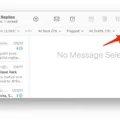
Running into a forgotten login on Safari shouldn’t derail your evening. The iPhone saved passwords hub in Settings delivers a quick fix, letting you view saved passwords tied to websites and apps through iOS 14 password management tools.
A Face ID prompt shields the list, while end-to-end encrypted Keychain keeps everything out of sight until needed. Inside the Passwords page you can copy credentials, check for weak logins, and delete old entries, all under secure password storage that lives on-device and syncs through iCloud.
Accessing Saved Passwords on iPhone iOS 14
Cracking open your iPhone password storage takes less than a minute once you know where to tap. Open Settings, hit passwords then unlock with Face ID, Touch ID, or passcode.
A searchable list pops up so you can access passwords on iPhone for any site or app. Tap an entry to copy, view, or hit Edit to manage saved passwords, handy when a security alert flags something sketchy. The search bar up top filters results instantly, saving precious scrolling time.
Authentication for Viewing Saved Passwords
Pull up Settings on iOS 14 and the Passwords vault stays locked until you prove you’re really you. Apple puts three authentication methods in the way: Face ID, Touch ID, or the device passcode.
Whichever one is configured fires automatically, so there’s no extra toggle to set up. Face or fingerprint match opens the list instantly. Otherwise, the passcode steps in. These layers work entirely on-device, keeping credentials offline and delivering secure password access while blocking snoops.
Using the Search Function to Find Specific Passwords
Scrolling through an endless list of logins wastes precious seconds. Pull down slightly on the Passwords list to reveal the password search bar. Type a site, app, or even part of a username and iOS filters matches in real time, letting you locate passwords quickly instead of swiping forever.
This built-in trick means there is no need to reopen Safari or Settings. Stay on the Passwords screen, tap the result, authenticate, then copy or view. Use it whenever you need to search saved passwords fast.
Editing and Deleting Saved Passwords
Head into Settings and tap Passwords, unlock with Face ID or a passcode, then pick the login that needs a tweak. Tap Edit and modify your saved passwords right away, swapping out an old username or updating the passphrase.
Need a clean slate? Tap Delete Password, confirm, and that entry disappears, tightening overall iOS password management.
Routine password removal trims clutter, cuts autofill errors, and frees you to delete passwords tied to accounts you no longer use.
Enabling and Using Autofill Passwords in iOS 14
Forgotten login codes slow down any session, so turn on Autofill passwords in just a few taps. Head to Settings, tap Passwords, then enable the autofill feature at the top. Select iCloud Keychain or a trusted manager like 1Password, confirm Face ID, and you’re set.
Next time a sign-in field appears, the keyboard’s QuickType bar offers your saved credentials. A single tap handles password autofill and unlocks the app or website instantly.
Understanding iCloud Keychain and Password Sync
Losing a Safari login at crunch time stops being a headache once iCloud Keychain steps in. Apple’s built-in vault keeps each password in the Secure Enclave, encrypts it end-to-end, then handles password syncing across devices logged into your Apple ID.
Sign in on iPhone, tap a Mac prompt, and the same login autofills instantly. This tight loop means safer logins without memorizing strings, and iCloud password management even flags weak credentials so stronger ones replace them before trouble hits.
Troubleshooting Saved Password Issues on iPhone
AutoFill acting up again and hiding your logins isn’t fun. Use these steps to troubleshoot saved passwords on iOS 14. Open Settings, tap Passwords, then confirm Autofill Passwords is toggled on.
If your iPhone is still having password issues, head to Settings > [Your name] > iCloud and check that Keychain is enabled under the same Apple ID across devices. To fix password sync problems, toggle Keychain off, restart the phone, then turn it back on.
Conclusion: Managing and Protecting Saved Passwords on iOS 14
Locking down those logins now feels almost effortless. Tuck every credential behind iOS 14 password protection in Settings, lean on Keychain alerts for reuse warnings, and watch how easy it becomes to manage passwords securely without extra apps.
Regular checkups in Security Recommendations polish off secure password management, sealing cracks before bad actors spot them.








